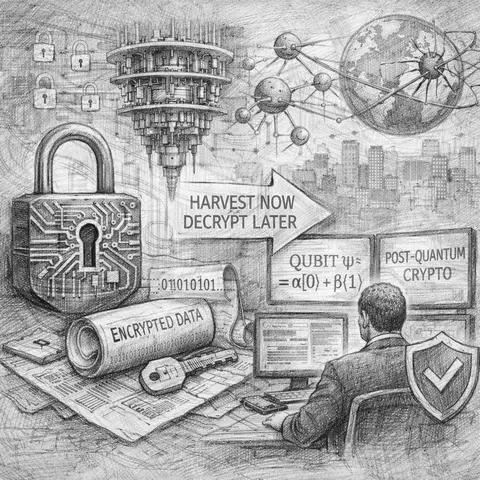
Quantum Risk Is No Longer Theoretical: A CISO Playbook for Crypto-Agility
When beginners hear OpenSSL, they often think “it's that thing for SSL certificates”.
In reality, OpenSSL is a cryptographic powerhouse — a tool capable of encryption, hashing, key generation, certificate management, and even low-level protocol testing. Sadly, many in the cybersecurity field underutilize it.
This guide will unlock OpenSSL's hidden capabilities and show you how to wield it like a pro.
OpenSSL is an open-source implementation of the SSL (Secure Sockets Layer) and TLS (Transport Layer Security) protocols.
It includes:
For cybersecurity professionals, we care about the CLI tool — it allows you to generate keys, encrypt data, sign messages, verify certificates, debug SSL connections, and much more.
sudo apt update && sudo apt install opensslbrew install opensslDownload from https://slproweb.com/products/Win32OpenSSL.html.
Whether for pentesting, lab work, or production setups, OpenSSL can create both self-signed and CA-signed certificates.
Generate a self-signed certificate:
openssl req -x509 -newkey rsa:2048 -keyout private.key -out cert.pem -days 365 -nodesInspect a certificate:
openssl x509 -in cert.pem -text -nooutUse Case: Red teams can quickly spin up HTTPS servers for phishing simulations. Blue teams can inspect suspicious certs for anomalies.
OpenSSL supports symmetric and asymmetric encryption.
Encrypt a file (AES-256):
openssl enc -aes-256-cbc -in secret.txt -out secret.enc -k StrongPassw0rd!Decrypt it:
openssl enc -d -aes-256-cbc -in secret.enc -out secret.txt -k StrongPassw0rd!Use Case: Securely share sensitive files without relying on third-party tools.
Hashes are vital for verifying data integrity.
openssl dgst -sha256 myfile.txtUse Case: Compare hashes to detect tampering in downloaded binaries or logs.
You can act as a lightweight SSL client to debug handshake issues.
openssl s_client -connect example.com:443Use Case: Check for expired certificates, weak cipher suites, or TLS version support.
Perfect for creating keys, salts, or tokens.
openssl rand -hex 32Use Case: Red team can generate payload encryption keys; blue team can create secure tokens for session management.
Asymmetric signing ensures authenticity.
Generate private & public keys:
openssl genpkey -algorithm RSA -out private.pem -pkeyopt rsa_keygen_bits:2048
openssl rsa -pubout -in private.pem -out public.pemSign a file:
openssl dgst -sha256 -sign private.pem -out signature.bin file.txtVerify the signature:
openssl dgst -sha256 -verify public.pem -signature signature.bin file.txtUse Case: Secure software distribution by signing executables.
Sometimes attackers hide payloads in Base64 — OpenSSL can decode it instantly.
openssl base64 -d -in encoded.txt -out decoded.binUse Case: Malware analysts can decode payloads without installing extra tools.
| Red Team | Blue Team |
|---|---|
| Spin up fake HTTPS servers for phishing | Inspect TLS configs for misconfigurations |
| Encrypt payloads for C2 communications | Verify file integrity of critical assets |
| Generate random data for encryption keys | Debug SSL handshake issues |
| Sign custom tools to evade detection | Analyze suspicious certs from threat intel |
OpenSSL is not just a “certificate tool” — it's a cybersecurity Swiss Army knife. From encryption and hashing to protocol testing and digital signing, its capabilities span the entire spectrum of secure communications.
If you master OpenSSL, you'll gain an edge in both offensive and defensive security operations. Don't let this tool stay in the shadows — start experimenting today.